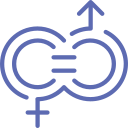Novice
Izjava o razkrivanju hrvaških političark* s strani društva Zagreb pride
V petek, 12. 4. 2024, je Zagreb Pride na svojih socialnih omrežjih objavil seznam domnevno LGBTIQ+ političark, ki kandidirajo za poslanke v hrvaškem saboru. V društvu Legebitra se pridružujemo številnim hrvaškim LGBTIQ+ organizacijam, ki so takšno ravnanje obsodile....
Aprilski dogodki v mladinskem centru
Vsi opisi dogodkov na enem mestu! KONČNO! Z aprilom pričenjamo objavljati opise dogodkov mladinskega centra tudi na spletno stran. Izrazili ste željo po bolj podrobnih opisih in objavah tudi izven socialnih omrežij, pa smo se odločili uvesti mesečni napovednik....
Migranti v Evropi: Omejen dostop do storitev preprečevanja in zdravljenja hiva
Čeprav se kar polovica novih primerov hiva v Evropi pojavlja pri osebah, rojenih v drugih državah, so migranti še vedno omejeni pri dostopu do ključnih storitev preprečevanja, testiranja in zdravljenja na hiv. Podatki Evropskega centra za preprečevanja in obvladovanje...
Razpis za delovno mesto na področju socialnega varstva.
Iščemo programsko* koordinatorico v programskem sklopu Psihosocilano svetovanje za LGBTIQ+ osebe za polni delovni čas - 40 ur na teden Pogoji: Izobrazba po 69. členu ZSV z najmanj dvema letoma delovne dobe kot strokovna delavka po ZSV, ali opravljen strokovni izpit po...
VSEM ŽENSKAM ŽELIMO SREČEN OSMI MAREC!
Ob letošnjem dnevu žena smo v mislih predvsem z ženskami, ki so jim zaradi političnih odločitev kratene človekove pravice, in tistimi, ki nimajo zagotovljenih osnovnih sredstev za dostojno življenje. Poleg tega, danes hodimo tudi za tiste, ki nimajo pravice do...
Sodeluj v raziskavi EMIS-2024
Potrebujemo tvojo pomoč v raziskavi EMIS (Evropska internetna raziskava za moške, ki imajo spolne odnose z moškimi) 2024. Gre za vse evropsko raziskavo, ki analizira spolne navade moških, ki imajo spolne odnose z moškimi. Nekateri se boste spomnili, da ste anketo že...

O nas
Društvo Legebitra je civilnodružbena LGBTIQ+ organizacija, ki deluje na naslednjih področjih: človekove pravice, izobraževanje, duševno, fizično in spolno zdravje ter se zavzema za družbene in sistemske spremembe, ki temeljijo na spoštovanju spolne usmerjenosti, spolne identitete in/ali spolnega izraza. Pri delovanju upošteva presečnost ostalih osebnih okoliščin, kot so zdravstveno stanje, narodnost, rasa ali etnično poreklo, jezik, vera ali prepričanje, hendikep, starost, družbeni položaj, premoženjsko stanje, izobrazba ali katero koli druga osebna okoliščina.

Vizija
Smo LGBTIQ+ organizacija, ki se zavzema za bolj sprejemajočo, enakopravno in odprto družbo.

Poslanstvo
S strokovnimi in dostopnimi dejavnostmi izboljšujemo družbeni in osebni položaj spolnih in seksualnih manjšin ter oseb s hivom.
Vrednote

STROKOVNOST
Kontinuirano usposabljanje in izobraževanje zaposlenih z namenom zagotavljanja kakovostnih dejavnosti, skladnih z etičnimi načeli.

ENAKOVREDNOST
Naše dejavnosti stremijo k zagotavljanju enakopravnosti in družbene enakosti naših ciljnih skupin.

ODPRTOST
Preko vključujočega in povezovalnega delovanja zagotavljamo odprt prostor za različnost.

DRUŽBENA KRITIČNOST
Konstruktivno preizpraševanje obstoječih družbenih norm politik, aktualnega stanja v družbi ter proaktivno ustvarjanje sprememb.

Društvo kulturno, informacijsko in svetovalno središče Legebitra
Trubarjeva 76a, 1000 Ljubljana
ter
Prešernova cesta 3, 1000 Ljubljana
DŠ: 24872458 (nismo zavezanci za DDV)
MŠ: 1210998000
TRR: SI56 1010 0006 0781 456 Intesa Sanpaolo
Poslovni delovni čas (uradne ure):
vsak delovnik med 10.00 in 16.00.


